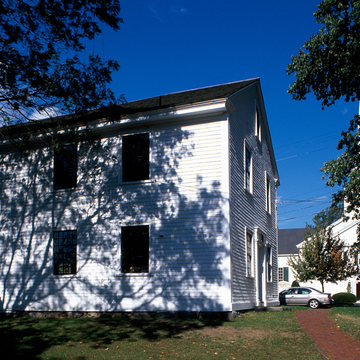Lynnfield Meetinghouse is one of the three or four oldest surviving meetinghouses in the Boston area and the least changed of early religious structures in this volume. A simple rectangular building, typical of eighteenth-century meetinghouse design, the structure bespeaks the desire of colonists to create a house of worship and meeting space free of references to English church design. Although later enlarged by two bays at the center of the structure and floored over at the gallery level, Lynnfield Meetinghouse, with its handsome pedimented doorway in the gable end, preserves important evidence of meetinghouse design and construction.
The meetinghouse served the community as its only religious building until 1832, when a group broke away to found the Congregational Church and built a chapel (18 Summer Street)















